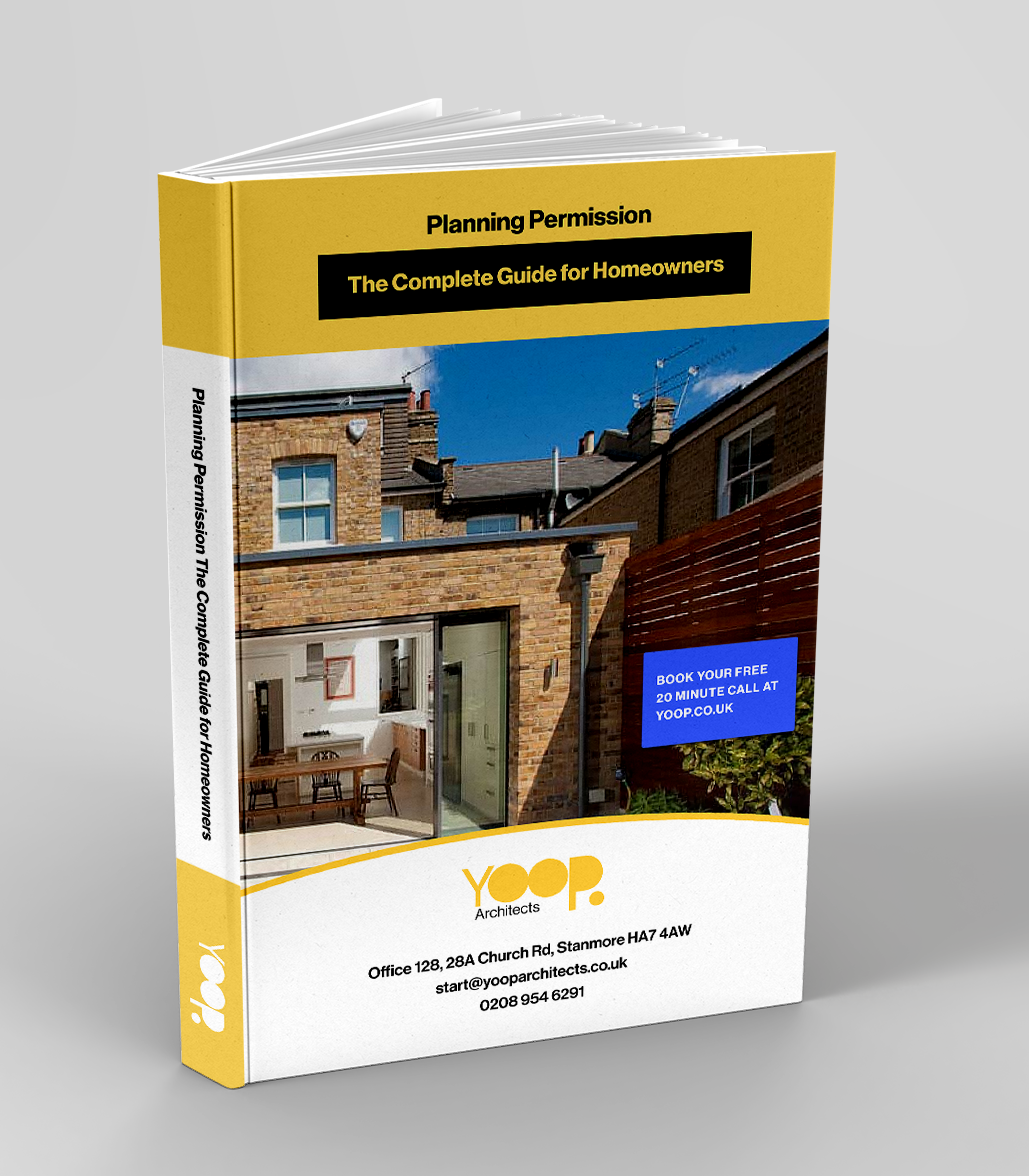
How to apply for planning permission
Transforming your home is exciting, but navigating the world of planning permission can feel daunting. Fear not! This comprehensive guide unravels the process in the UK, empowering you to apply for planning with confidence. We’ll explore what factors influence approval. Particularly, common pitfalls to avoid, and the steps required for a smooth application journey. Let’s turn your home improvement vision into a reality, the right way!
What is planning permission?
Planning permission is the process by the council. Which determines whether extensions on a terraced, semi detached or detached property are lawful.
So any rear extensions, side extensions, loft extensions, changes to the front porches. Or converting a garage are always all covered by planning permission. Otherwise they will be deemed unlawful, rather than illegal.
The reason that it’s unlawful is because the extension doesn’t yet have permission. But if you apply for planning it would have passed.
Do I require planning permission?
Typically you require planning permission for any changes to your house. The only reason you would not require planning permission to do any extensions to your home is that you seek a certificate of lawfulness. Which is also called permitted development.
Types of planning permission
Permitted development
Permitted development is an active law in the UK. Which allows a homeowner to do minor changes to their home without apply for planning approval from the council. It was brought in to free up the council from very simple extensions. So under permitted development you can do a rear extension, a side extension, a loft extension or porch extension. You can change windows, put on satellite dishes, etc. You don’t have permitted development rights in a conservation area or on a listed building or a locally listed building. Permitted development is a very black and white set of rules and the extension either does comply with permitted development or it doesn’t. We always recommend that you apply for planning permitted development for minor changes and the council will issue you a certificate of lawfulness.
Outline planning permission & Full planning permission
Because we’re dealing with residential planning applications we wouldn’t use outline planning permission or full planning permission. We typically use a householder application. A householder application was brought in because it requires less information than a fully apply for planning permission. So it just deals with the normal extensions that a homeowner may be proposing. Whereas full planning permission would be required to cover. For example a Sainsbury’s shopping center or a new house. So, generally you’d need either permitted development or a householder application.
Typically you require planning permission for any changes to your house. The only reason you would not require planning permission is if the work's covered by permitted development.
- Yoop Architects TWEET THIS
What does a planning application include?
The first thing to apply for planning includes is a site plan or location plan. You might have seen them based on an ordnance survey map and it will have a red line around the extent of the property. In addition to this, typically requires two streets to be shown on the map so that the local authority knows that it’s looking at the right house.
The other information that is required are a full set of existing plans, elevations, potentially sections. Thereafter, a full set of proposed plans, elevations and potentially sections. If it’s in a conservation area or a more complicated area,. There might be a written document required as well, called a design and access statement. You can also apply for planning statement. However, usually a householder application is fairly straightforward so that you just need good information on the drawings.
At Yoop Architects, because we draw everything in 3D, we always show 3D views of the outside of the building and we show those views in existing and proposed. This helps the homeowner really understand how to apply for planning. After that what they’re achieving and also it’s really, really helpful for the planning officer when they’re looking at it to help understand what the context is and that it’s okay.
How are planning applications decided?
When Yoop Architects will apply for planning on your behalf, it will go to the planning department of the local authority. Also the local authority has a statutory eight weeks to deal with the application. First they’ll register the application and a validation team will go through the information. Moreover, make sure that they’ve got all the location plans, site plans, the existing and proposed drawings so that when a planning officer (who’s usually quite busy) comes to look at it, everything’s in place.
If all the information is not there, then the validation teams will make it invalid. Additionally, we will receive a letter and we’ll have to provide a little bit more information or a clarification. Some applications need extra information if there’s a unique situation such as flood risk assessments, ecology. Maybe a bat survey if you’re backing onto a forest but that’s quite rare. It’s very case by case. The more urban location you are, the more straightforward it will be.
Understanding timeline to apply for Planning
Once it’s valid, then there’s a 21 day consultation period and the local authority will put green notices up on lamp posts and similar objects. They’ll notify your adjacent neighbors and your neighbors and community have the opportunity to comment and object. Next, there’ll be a site visit by the case officer – the case officer will go down and check that the drawings match the locality and the context and it’s a fair representation of what’s actually there. They also might check for any trees in close proximity, any tree preservation orders, anything like that.
When it comes up to about week six of the eight weeks, that’s when we usually try and talk to the planners and to see if everything’s okay – if they need any tweaks or if there’s any concerns, any objections, those kinds of things. If the proposals essentially comply with all the local authority guidance and policy, that’s when the officer can approve it under delegated powers.
Normally a planning committee would approve all applications, but because the householder application’s a minor planning application, they leave it to the good judgment of the planning officers. The planning officer will approve it in conjunction with their team leader, so it’s not just down to one person and they will issue the decision notice on the eighth week.
Inside this easy to read free guide, we will teach you the key things you need to know about planning permission.
What happens if my planning application is refused?
At Yoop Architects, at the final stage of the eight week process, we try and touch base with the case officer. Sometimes it’s quite hard but that’s why we build a good relationship. If it’s a very minor thing – something like an objection or the case officer might say, ‘We’d like some obscure glazing on a side window’ or ‘Can we bring in the wall 300 millimeters?’ then usually we get the opportunity to tweak the drawings, send them back to them, and then they approve them.
If it’s something more fundamental and the planning application’s refused, we’ll get the decision notice and it will say why it was refused. It can’t be because they just don’t like it – there will be quite specific grounds for refusal and it’s at that point we can look at it and go, ‘Well, can we change the scheme so that it will be okay and then we can resubmit it?’ Or does the homeowner, disagree with how the council’s interpreted their guidance and policy? And that’s when you can go for appeal. Appeal of apply for planning usually takes about 10 weeks by the householder application appeal process.
So usually what we try and do at Yoop Architects is work with the planner, work with the homeowner to get it through first time. If it can’t go through first time, then usually we can have a chat with the planner, fingers crossed that they can give us a little bit of guidance to get it through.
What happens if I carry out work without approval?
It will never be recommended by any architect that you carry out any works without planning approval. The reason for that is that you don’t know that you’re going to get approval and even if it’s covered by permitted development, your builder only needs to build 100 millimeters too big this way or 100 millimeters too high and then it will not be covered by permitted development – it’s very black and white. You’re always best off getting the apply for planning approval notice or a certificate of lawfulness via the permitted development prior to starting on site.
If you did proceed and you didn’t have planning approval or a certificate of lawfulness, then the council enforcement team would come round and take enforcement action against you. In the first instance, they would ask you to submit a planning application and fingers crossed you get planning approval so you’re better off getting it up front. If you built something that could not get planning approval, then the local authority would end up asking you to take the building or the extension down. You do also have the right to appeal these decisions as well, but you can save yourself a lot of bother by getting planning or a certificate of lawfulness upfront.
How do I get planning permission?
The first step is call your local architect and your local architect should be able to give you good advice based upon the local authorities guidance and planning policies. When the local authority and case officers are looking at extensions, they don’t just make up what seems nice and looks good. It’s a carefully crafted document, produced by a local authority that says what is typically acceptable in that borough.
Every borough is generally the same, but there are minor variations and sometimes it’s just half a meter here and there and slightly different policies. It does vary from borough to borough so it’s best to get your local architect or an architect who works in that borough. At Yoop Architects, we work in about six to seven boroughs. So for example, we don’t work in south London, we just look after North London and north home counties because we understand those local authorities – we deal with them all the time, we know all the guidance and the policies and also generally what will be acceptable by that council.
Streamlining on apply for planning
Every council has a little bit of a twist on different things, so it’s good to have an architect who understands those kinds of things. Once you’ve hired an architect, you go through what you’re looking to achieve in the house and your architect will craft the minimum amount of extension required to achieve that goal. You don’t want to build just for the sake of building. You want to very much work with the house and put on sympathetic extensions that suit the house and that’s what the local authority will be looking for also.
Yoop Architects will submit a planning application on your behalf or you can apply for planning permission/permitted development via the Planning Portal or through your local authority. A planning permission application in England for an extension currently costs £206. An application for a Certificate of Lawfulness (Permitted Development) in England currently costs £103.
FREE EXPERT HELP TODAY
Thinking of your dream home improvement or how to start your project?
Need your planning questions answered? Talk to an expert today.
Book a FREE 20 Minute Call with one of our home improvement Architects.


